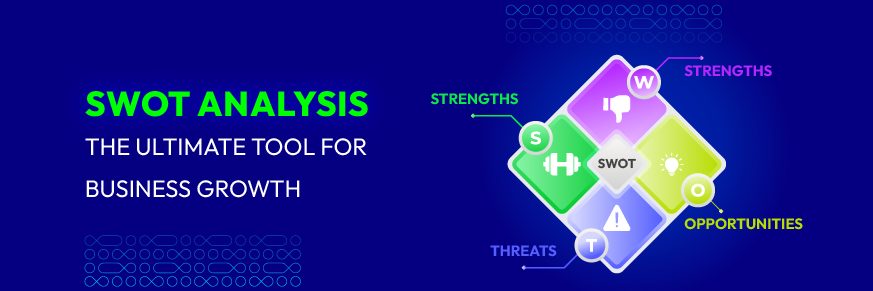Shopify Plus API: Overview & How It Enhances Your Ecommerce Business
Summer Nguyen | 01-26-2024

Shopify Plus is built for high-growth, enterprise-level businesses needing scalability and customization. The Shopify Plus API takes this further—enabling advanced integrations, automation, and enhanced performance. In this article, we’ll explore how the Shopify Plus API can elevate your e-commerce operations through greater efficiency, flexibility, and innovation.
What is Shopify Plus API?
Shopify Plus API serves as an important gateway for businesses operating on the Shopify Plus enterprise-level platform. It provides a powerful framework to scale and optimize merchants’ e-commerce operations, enabling them to communicate and exchange data seamlessly between Shopify Plus and external applications.
More specifically, this powerful application programming interface allows you to extend and customize your e-commerce operations, enable integration with third-party tools, automate key processes, and enhance overall functionality.

In addition, through a RESTful architecture, the Shopify Plus API allows developers to access and manipulate data, create custom workflows, and provide specialized solutions to fulfill the unique requirements of big, intricate companies.
Shopify Plus Exclusive API and Use Cases
1. Multipass API
The Multipass API allows you to offer a seamless login experience across multiple platforms. It’s primarily used to allow customers to log into Shopify Plus from another site without having to create a separate account. This is useful for businesses that operate a custom app, forum, or community platform.
Use Cases:
- Centralized login for users across multiple online properties.
- Integrating Shopify Plus with an existing membership or loyalty platform.
2. Shopify Flow
Shopify Flow isn’t an API, but it’s an automation tool exclusive to Shopify Plus. It lets you create workflows that automate tasks like tagging customers, sending notifications, or managing inventory.
Use Cases:
- Automating customer segmentation based on purchase history.
- Setting up automatic restock notifications when inventory is low.
- Streamlining order processing by notifying specific teams based on order types.
3. Script Editor API
The Shopify Script Editor allows you to create custom scripts that run on your Shopify store’s checkout. With this API, you can customize discounts, shipping options, and payment gateways, giving you more control over how your checkout process works.
Use Cases:
- Creating tiered discounts based on cart value.
- Customizing shipping options depending on customer location or cart contents.
- Displaying special payment methods for VIP customers.
4. Bulk API
Shopify Plus merchants can utilize the Bulk API for large-scale data management tasks. This API allows you to process thousands of items in bulk, like orders, products, or inventory, without hitting the rate limits that typically apply to the standard Shopify API.
Use Cases:
- Bulk updating product information, such as price changes or inventory restocks.
- Exporting and processing bulk data for analytics.
- Handling large imports/exports of orders and customer data.
5. Wholesale Channel API
Exclusive to Shopify Plus, this API allows businesses to create wholesale storefronts connected to their existing retail stores. The wholesale storefront can be customized with its own product catalog, pricing, and discounts.
Use Cases:
- Offering separate pricing tiers for wholesale customers.
- Creating a private wholesale store with exclusive products and pricing.
- Automating wholesale account creation and approval processes
Advantages of Using The Shopify Plus API
The Shopify Plus API serves as a catalyst for ecommerce success. It provides a strategic advantage by allowing you to create more personalized, streamlined, and efficient ecommerce. Below is a summary of the biggest benefits it can bring to your store:

- Customization and flexibility: With the high degree of customization provided by the Shopify Plus API, companies can modify their e-commerce solutions to fit particular needs. This flexibility is important for large enterprises with unique workflows and complex business processes.
- Seamless integration: Businesses can seamlessly integrate the Shopify Plus platform with third-party apps and services using APIs. This integration streamlines processes, enhances functionality, and creates a cohesive ecosystem to manage different aspects of the business.
- Automated workflows: Businesses can automate crucial procedures like order fulfillment, inventory control, and customer communications with the Shopify Plus API. This automation increases productivity and lowers the possibility of mistakes in manual procedures.
- Advanced payment customization: The Script Editor feature in the API allows businesses to customize the payment process, creating a personalized and optimized customer experience. This level of customization can positively impact conversion rates and user satisfaction.
Notably, Shopify Plus offers increased API rate limits compared to the standard Shopify plan. This means that communication between your store system and Shopify Plus is guaranteed to be faster and more efficient. Thanks to that, your data synchronization process will happen faster with a streamlined process and reduced waiting time for your customers.
How to Effectively Use The Shopify Plus API for Your Store
Once you can fully utilize the power of the Shopify Plus API, your business will be taken to the next level. Making good use of this tool will enable your store to grow and offer a distinctive shopping experience that distinguishes your company in the crowded e-commerce market.
If you’re just starting out or want to improve your knowledge, check out the tips below to help you navigate your online store journey.

Understand Your Business Requirements
Before diving into API integration, you need to thoroughly understand your business requirements. You might consider identifying areas where automation, customization, or integration with external systems can improve efficiency and user experience.
Let’s look at a typical example to illustrate the importance of understanding business requirements using the Shopify Plus API.
Case: Custom order fulfillment process
Business context: Your high-volume ecommerce business runs on Shopify Plus, specializing in personalized and made-to-order products. Your standard order fulfillment process includes a series of customizations, approvals, and production steps before shipping.
Business requirements:
- Adjustment approval process:
- Custom products require design team approval before production.
- Approval includes reviewing customer specifications and ensuring they meet quality standards.
- Integration with production software:
- Once approved, orders need to be seamlessly integrated with manufacturing software to begin production.
- Production status updates will reflect in real-time on your Shopify Plus store.
- Communicate with customers:
- Customers will receive automatic updates at key stages, such as order approval, production start, and shipping.
- Provides a customer portal to track the status of their custom orders.
After understanding these business requirements, your ecommerce business decides to leverage the Shopify Plus API to create an optimal custom fulfillment process as follows:
- Custom approval process: Use the REST admin API to retrieve order details and create custom apps for your design team to review and approve orders directly from the Shopify Plus admin interface.
- Integration with production software: Implement custom webhooks to trigger events in production software whenever an order is approved. This ensures seamless data transfer between systems.
- Real-time production updates: Use the batch operations API to process large data sets efficiently, updating the production status on your Shopify store in real-time.
- Communicate with customers:
- Deploy custom scripts using the Script Editor to automatically communicate with customers, sending personalized order status updates via email or SMS.
- Leverage the Storefront API to create a customer portal on your website where customers can track the status of their custom orders.
As you can see, by understanding your business requirements, you can use the Shopify Plus API strategically to create the right solution that meets your specific needs and improves operational efficiency and customer satisfaction.
The API Resources Needed to Develop A Shopify Plus Store
Developing a Shopify Plus store focused on API integration requires businesses to focus their technical resources and secure specific expertise. Shopify has developed many useful resources for developers who want to build custom apps. These resources ensure smooth development and successful integration with the Shopify Plus platform.
So, for Shopify Plus merchants, it’s crucial to learn and become familiar with the available API resources. Here are the key API-related resources you need to develop a Shopify Plus store:
- API documentation: Get familiar with the Shopify API documentation, especially the sections related to the Shopify App API, REST Admin API, and GraphQL Admin API. This document provides detailed information on interacting with the Shopify API and building effective integrations.
- Multipass: Multipass is a single sign-on (SSO) solution specifically for Shopify Plus. It allows customers to log in once to different websites.
For example, you are a global business that operates multiple stores serving different regions or product lines. By embedding the Multipass token into the URLs of your web pages, you can allow your customers to access any of your storefronts without having to log in separately for each store.
- Gift Card API: Shopify Plus’s gift card API plays an important role in helping merchants seamlessly manage and customize the gift card experience in their online stores.
For example, you can leverage the Gift Card API to implement a unique feature, allowing customers to redeem gift cards across channels or platforms. The capabilities of this API can also extend to tasks such as checking balances, activating or deactivating cards, and other management functions.
Updates and Improvements in The Shopify Plus API
Ultimately, the most important thing to help you take full advantage of the Shopify Plus API’s capabilities is to keep them updated and improved. Tech companies like Shopify regularly release updates and improvements to their APIs to enhance functionality, security, and overall user experience. This will help businesses build their store applications bigger and more efficiently.
For example, Shopify recently introduced the latest updated version of its Subscriptions API. In this new version, Shopify allows developers to integrate applications with Shopify Checkout to further enhance the customer experience.
Conclusion
In summary, the Shopify Plus API is a potent instrument that greatly expands the potential of e-commerce companies using the Shopify Plus platform. You can easily connect, personalize, and optimize your online stores to match the distinct demands of your clients thanks to its broad range of capabilities.
Hopefully the useful information in this article has given you a clearer view of the features and benefits of the Shopify Plus API. Leverage them to help your business begin its journey toward an enhanced e-commerce experience and achieve success in the age of digital commerce.








